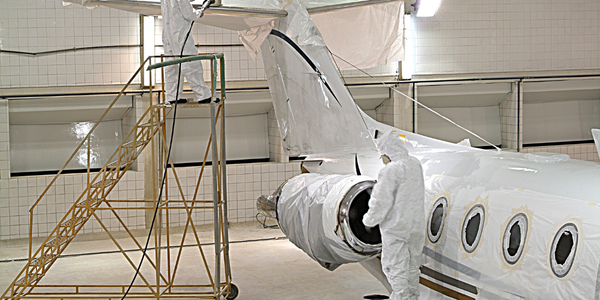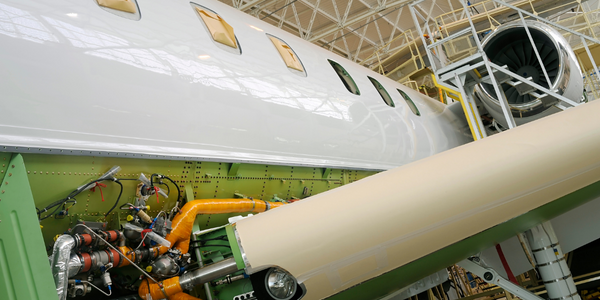Customer Company Size
SME
Region
- America
Country
- United States
Product
- E2 Manufacturing Software
Tech Stack
- AI
Implementation Scale
- Enterprise-wide Deployment
Impact Metrics
- Productivity Improvements
- Cost Savings
Technology Category
- Application Infrastructure & Middleware - API Integration & Management
Applicable Industries
- Aerospace
Applicable Functions
- Discrete Manufacturing
Use Cases
- Manufacturing System Automation
Services
- Software Design & Engineering Services
About The Customer
Volume Machine is a small CNC shop based in Van Nuys, California, specializing in the aerospace industry. The company has been using E2, a manufacturing software, since 1999. The company has experienced significant growth and has been able to overcome many hurdles due to the implementation of E2. Despite the growth, the company is trying to slow down a bit and focus on making good machine parts for a good purpose. The company's goal is to have control and precision in their business, which has been made possible by the knowledge E2 has provided them over the years.
The Challenge
Volume Machine, a small CNC shop specializing in the aerospace industry in Van Nuys, CA, has been using E2 since 1999. The manufacturing industry is notorious for having a tumultuous, cyclical cycle. With E2, they can be flexible and run with those changes. Because every bit of information is accessible with just the click of a button, the team can quickly identify which current jobs and which prospects will best suit their schedule and goals. The challenge was to implement a system that could handle the cyclical nature of the manufacturing industry and provide the flexibility to adapt to changes.
The Solution
The solution for Volume Machine was the implementation of E2, a manufacturing software. E2 provided the company with the ability to be flexible and adapt to the changes in the manufacturing industry. The software is user-friendly and intuitive, making it easy for the team to quickly identify which current jobs and prospects will best suit their schedule and goals. The software also has a forgiving tool that allows for easy correction of errors. The company's president and founder, Richard Arnold, was initially reluctant about the software but was convinced of its value after seeing its efficiency in inventory, order, and delivery tracking of their master shipping cartons.
Operational Impact
Quantitative Benefit

Case Study missing?
Start adding your own!
Register with your work email and create a new case study profile for your business.
Related Case Studies.

Case Study
Airbus Soars with Wearable Technology
Building an Airbus aircraft involves complex manufacturing processes consisting of thousands of moving parts. Speed and accuracy are critical to business and competitive advantage. Improvements in both would have high impact on Airbus’ bottom line. Airbus wanted to help operators reduce the complexity of assembling cabin seats and decrease the time required to complete this task.

Case Study
Aircraft Predictive Maintenance and Workflow Optimization
First, aircraft manufacturer have trouble monitoring the health of aircraft systems with health prognostics and deliver predictive maintenance insights. Second, aircraft manufacturer wants a solution that can provide an in-context advisory and align job assignments to match technician experience and expertise.

Case Study
Aerospace & Defense Case Study Airbus
For the development of its new wide-body aircraft, Airbus needed to ensure quality and consistency across all internal and external stakeholders. Airbus had many challenges including a very aggressive development schedule and the need to ramp up production quickly to satisfy their delivery commitments. The lack of communication extended design time and introduced errors that drove up costs.

Case Study
Accelerate Production for Spirit AeroSystems
The manufacture and assembly of massive fuselage assemblies and other large structures generates a river of data. In fact, the bill of materials for a single fuselage alone can be millions of rows of data. In-house production processes and testing, as well as other manufacturers and customers created data flows that overwhelmed previous processes and information systems. Spirit’s customer base had grown substantially since their 2005 divestiture from Boeing, resulting in a $41 billion backlog of orders to fill. To address this backlog, meet increased customer demands and minimize additional capital investment, the company needed a way to improve throughput in the existing operational footprint. Spirit had a requirement from customers to increase fuselage production by 30%. To accomplish this goal, Spirit needed real-time information on its value chain and workflow. However, the two terabytes of data being pulled from their SAP ECC was unmanageable and overloaded their business warehouse. It had become time-consuming and difficult to pull aggregate data, disaggregate it for the needed information and then reassemble to create a report. During the 6-8 hours it took to build a report, another work shift (they run three per day) would have already taken place, thus the report content was out-of-date before it was ever delivered. As a result, supervisors often had to rely on manual efforts to provide charts, reports and analysis.

Case Study
Developing Smart Tools for the Airbus Factory
Manufacturing and assembly of aircraft, which involves tens of thousands of steps that must be followed by the operators, and a single mistake in the process could cost hundreds of thousands of dollars to fix, makes the room for error very small.








